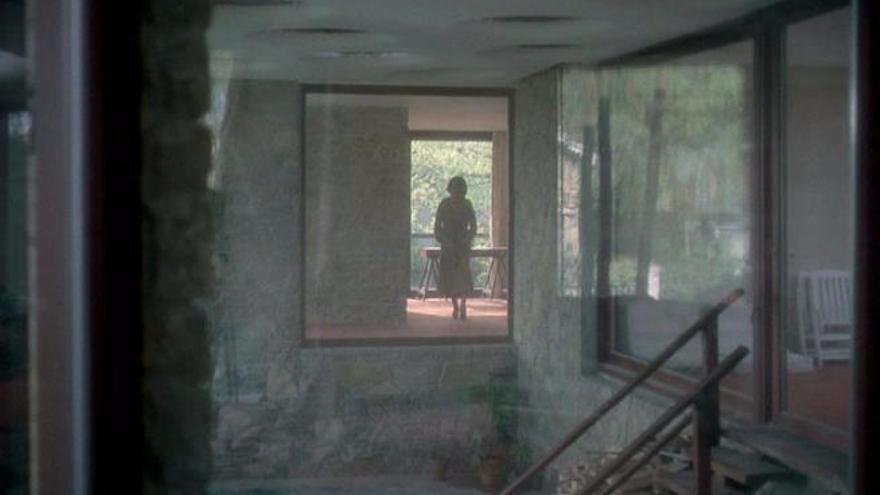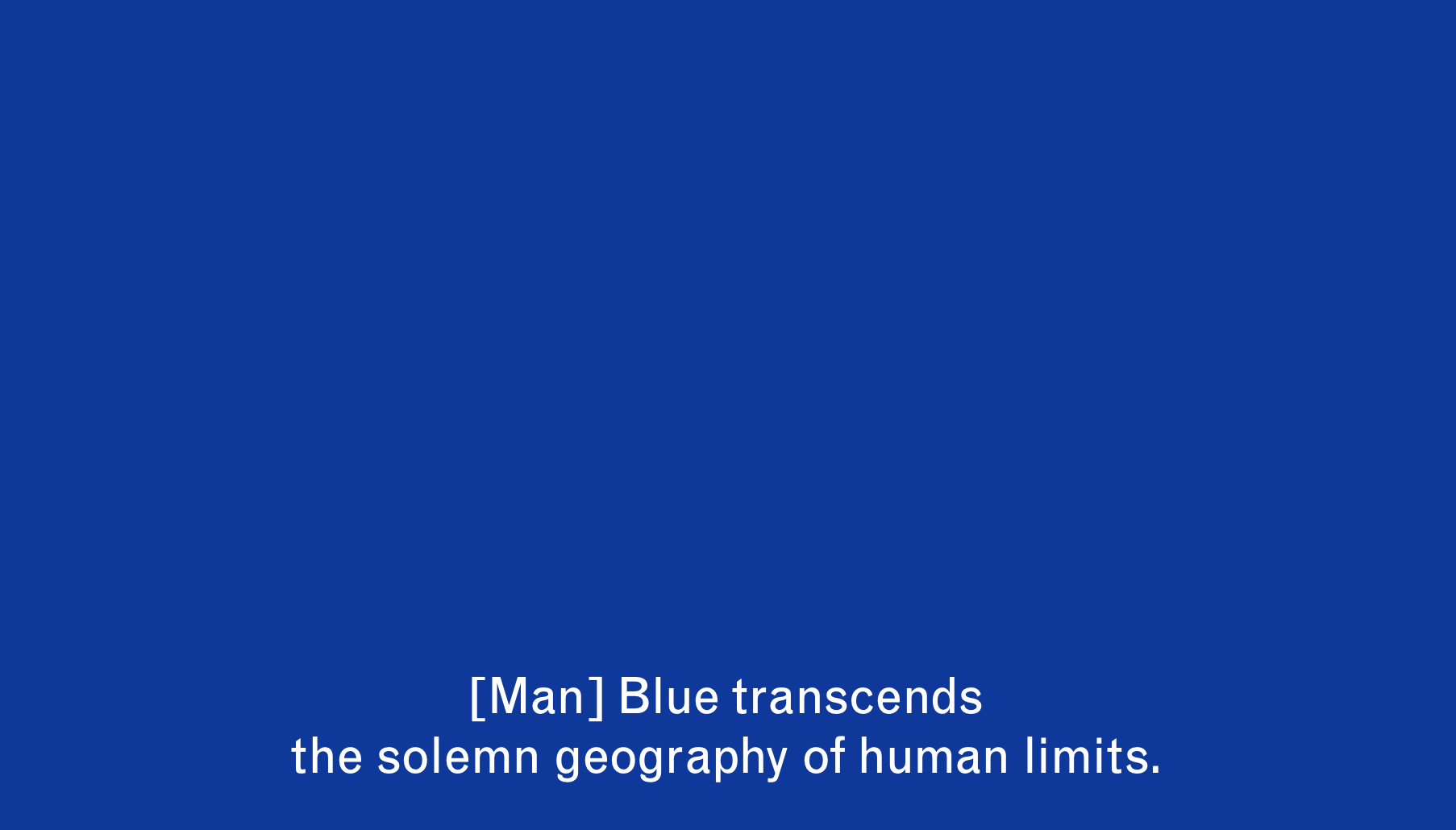
Sound as Protest: Continuous Non-Diegetic Soundtracks as Political Strategy
A nude woman lies on pink bed sheets, pearls roped around her neck. Waves crash beneath seagull cries as the image of a wooden villa appears onscreen. A brief conversation between a bartender and our protagonist unfolds. Then, Delphine Seyrig’s voice utters the phrase, “Baxter, Vera Baxter,” and the music begins—a cheery, looping track of ukulele and flute that does not end until the credits roll. These are the only moments in Marguerite Duras’s 1977 film Baxter, Vera Baxter untouched by the unrelenting, saccharine non-diegetic score. The result is a jarring dissonance: the bright, bouncy music clashing against a somber story of existential pain and female disillusionment. This dissonance is not accidental, but rather a strategy.
In the case of Baxter, Vera Baxter, Vera Chytilová’s Fruit of Paradise (1969), and Derek Jarman’s Blue (1993), the full-length non-diegetic soundtrack is not merely an aesthetic choice, but a political tool. In each case, continuous sound disrupts conventional cinematic rhythm and acts as a form of protest — one that confronts censorship, erasure, and ideological domination. These soundtracks do not just accompany their respective films; they dominate, subvert, and even replace image, forcing the audience into a sonic environment that resists passive consumption.
Blue (1993), narrated and directed by Derek Jarman
In Blue, Jarman eliminates the image altogether. The screen remains a constant, unchanging blue for the film’s 79-minute runtime, while a rich auditory tapestry unfolds — memories, reflections, confessions, and a haunting soundscape. Jarman, going blind and dying of AIDS, presents sound as a last act of resistance in a society unwilling to see him. “In the pandemonium of image,” he declares, “I present you the universal blue.” The score and narration become the means by which he communicates what sight can no longer carry. Without image, sound bears the entire political and emotional weight of the film. It’s not an aesthetic subtraction; it’s a protest against a visual culture that has thus far neglected this suffering. In this way, Blue is a sonic act of reclamation.
Chytilová’s Fruit of Paradise also weaponizes sound, but in a different context — doing so under the pressure of state censorship in 1960s Czechoslovakia. The film, a psychedelic retelling of the Adam and Eve story, deploys a disorienting visual style alongside a frenetic, ceaseless score by Zdeněk Liška. The soundtrack overwhelms, confuses, and fragments, creating a sensory overload that resists coherence. This confusion is deliberate. In a political climate where direct critique of religion and communism risked suppression or arrest, Chytilová obscures her message through form. Sound becomes camouflage — an overwhelming layer that disorients censors while alerting audiences attuned to subtext. Here, non-diegetic sound becomes a weaponized aesthetic.
Stills from Chytilova’s 1970 film, Fruit of Paradise
If Blue subtracts the image and Fruit of Paradise overwhelms it, Baxter, Vera Baxter lulls it into suspension. Duras’s score loops endlessly, emotionally contradicting the film’s foggy tone and its dark central narrative. It can be suggested that the score reflects the oppressive cheeriness imposed on women—the forced pleasantness of domestic life and femininity. The villa’s seaside setting becomes a trap, a place that demands the performance of leisure and beauty, even as Vera confronts betrayal, alienation, and existential despair. In this sense, the music is not just ironic; it’s ideological. It represents a society’s refusal to hear the truth beneath the surface. By saturating the film with music that refuses to reflect the emotional content of the scene, Duras imposes a confrontation: the audience cannot ignore the dissonance, and must reconcile it themselves. The score doesn’t soothe; it agitates.
The use of continuous non-diegetic sound in each of these films is rooted in the filmmakers’ desire to control the narrative space—emotionally, politically, and sonically. As Dmitri Shostakovich once argued, a film score should be “a cohesive entity rather than a patchwork quilt of cues.” These filmmakers extend this logic to its limit, using the score as a kind of totalizing atmosphere. But what happens when this cohesion becomes suffocating? Is it manipulative? In the hands of politically urgent filmmakers, manipulation becomes a form of protest. The unbroken soundtrack is not background, it’s a foregrounded imposition, a way of claiming space and denying the viewer’s detachment.
A 2017 study from Loyola University Chicago found that non-diegetic music can dramatically shape the viewer’s perception of a scene, even distorting or exaggerating emotions that aren’t present in the image. In ambiguous scenarios, music can tip the scale toward one interpretation over another. Applied continuously, this strategy limits ambiguity entirely; the film tightly controls affect. In this way, continuous sound becomes a kind of ideological gatekeeping. The filmmaker chooses not just what the viewer sees, but what they feel, overriding the possibility of misinterpretation or detachment. That level of control is inherently political.
This brings us to an essential question: Who can afford silence, and who must speak loudly to be heard? For Chytilová, silence would have made her critique legible—and in turn, bannable. For Jarman, silence was death. For Duras, silence might have erased the emotional and ideological contradiction she sought to expose. Continuous non-diegetic sound, then, becomes an act of survival — a protest against invisibility, censorship, and dismissal.
In each case, the soundtrack exceeds the traditional role of emotional cue or atmospheric filler. In Blue, it substitutes for the absent image. In Fruit of Paradise, it drowns out ideological clarity with sonic chaos. In Baxter, Vera Baxter, it disorients and disturbs with cheerful indifference. These strategies may seem radically different, but they share a common goal: to use the unrelenting presence of sound to assert political agency and deny interpretive neutrality.
A full-length, non-diegetic soundtrack in politically charged cinema is not just a stylistic flourish. It is a radical act of control that works by silencing dominant voices throuhg the filling of space with the noise of the marginalized. In these films, sound doesn’t support politics; it is politics. And when that sound refuses to end, it ensures that protest continues, even as the image fades.



